The TATA Group success story; Everything you need to know
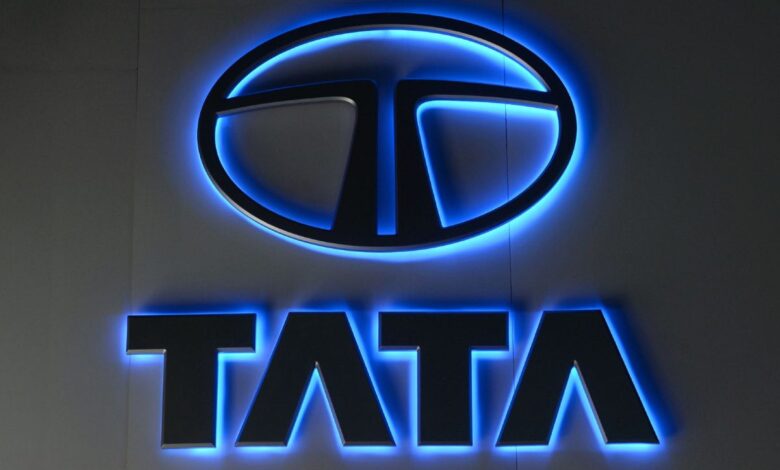
The Tata Group Case Study: Success Story of the Tata Group of Industries
With its headquarters in Mumbai, India, the Tata Group is an international holding company for aggregates. Jamsetji Tata founded the organisation in 1868, and after purchasing a few international businesses, it gained further recognition on a global scale. Tata Group, arguably the largest group, is owned by Tata Sons.
Under the leadership and neglect of its directorate and investors, each Tata organisation operates independently. Indian Hotels Company, Tata Chemicals, Jaguar Land Rover, Tata Communications, Tata Consultancy Services, Tata Motors, Tata Power, Tata Steel, Voltas, and many more notable Tata companies and subsidiaries are included.
Tata Group origins and history
Jamsetji Tata established a trade business in 1870 with a capital of 21,000 INR. He bought a failing oil building in Chinchpokli, converted it into a cotton plant apprehended as Alexandra Mill, and then sold it at a profit two years later. He established the Empress Mill, a new cotton plant in Nagpur, in 1874.
His goals were to build a hydropower plant, a world-class learning organisation, a world-class iron and steel corporation, and an extraordinary resort. The Taj Mahal Hotel at Colaba waterfront was inaugurated in 1903 during his lifetime, making it the first in prominence for a large amount of time.
Dorabji Tata, Jamsetji Tata’s son, took over as Chairman in 1904 after his father’s passing. In 1907, Sir Dorabji established the Tata Iron and Steel Company (TISCO), currently known as Tata Steel. Tata Limited established its first overseas office in London to signify the group’s aspirations for a global presence. The Indian Institute of Science was founded in 1911, and the first hydroelectric plant in Western India was soon made as per Jamsetiji’s request.
JRD In 1938, Tata was appointed Chairman of the Tata Group. During his presidency, the TATA Group’s profits rose from $100 million to about $5 billion.TATA had 14 projects when he took leadership, but by 1988 Tata Sons had grown into a conglomerate of 95 projects. These actions included projects that the organisation had either started or held bulk ownership in.
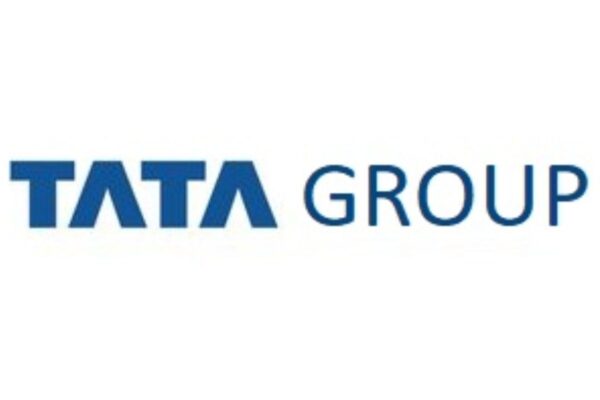
Tata Air Services was founded by JRD in 1952. (subsequently changed to Tata Airlines). The Air Corporations Act was passed by the Indian government in 1953, allowing it to buy a larger part of the carrier from Tata Sons, while JRD Tata continued to act as chairman until 1977.
Tata Motors was originally concentrated on trains when it was founded in 1945. It joined the commercial vehicle market in 1954 after forming a coalition with Daimler-Benz. Tata Consultancy Services was founded in 1968.
Ratan Tata was named Chairman of the Tata Group in 1991. Additionally, India’s economy was developing at this time, which allowed for the entry of foreign competitors. Tata Group began acquiring several businesses at this time, including Tetley (2000), Corus Group (2007), and Jaguar & Land Rover (2008). Natarajan Chandrasekaran was assigned manager in 2017.
A list of the Chairmen of the Tata Group from 1868 to the Present
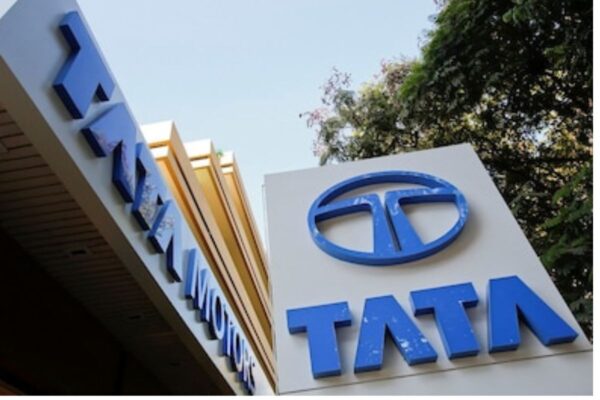
The Tata Group, with its corporate headquarters in Mumbai, is considered the top multinational conglomerate in India. The corporation has a reputation for operating for more than 150 years, and a variety of industries use its products extensively.
More than 150 countries and six continents are reported to be served by the business. Since Tata Group’s inception, the number of chairmen has been specified as performing in that span. The following is a list of the chairman of the Tata Group:
1868–1904 Jamsedji Tata
Jamsedji Tata, an Indian frontiersperson and the founder of the Tata Group, the country’s largest conglomerate of businesses today, was born on March 3rd, 1839. He operated as the company’s first chairman and held that position until 1904.
Sir Jamsedji Tata has received countless accolades and honours. He was granted the title “Father of Indian Industry” in honour. On the list of “Hurun Philanthropists of the Century (2021),” he also arrived in the first place. Age 65, Sir Jamsedji Tata passed away on May 19, 1904.
1904–1932: Sir Dorabji Tata
Sir Dorabji Tata, the second chairman of the Tata Group and the eldest child of Sir Jamsedji Tata, was born on August 27, 1859. He passed away in 1932, giving the Tata Group its third chairman.
During the British era, Sir Dorabji Tata was crucial in creating and maintaining the Tata group of companies. Sir Dorabji Tata’s main objective was to develop the modern iron and steel industry and realise the vision set by Sir Jamsedji Tata.
The Indian Olympic Association’s first president was Sir Dorabji Tata. The British people recognised him. Edward Vll knighted Dorabji Tata in 1910, renaming him Sir Dorabji Tata.
1932–1938: Sir Nowroji Saklatwala
Sir Nowroji Saklatwala, who was born on September 10, 1875, acted as the third chairman of the Indian multinational conglomerate Tata Group. He was just a regular employee and an apprentice of the Tata Group, unlike the last two chairmen.
He rose through the ranks from employee to chairman and held that position until his sudden death from heart disease in 1938. Sir Nowroji Saklatwala established multiple programmes and amenities for the employees and always accomplished them sufficiently for their welfare.
1938–1991: JRD Tata
Jehangir Ratanji Dadabhoy Tata, who was born on July 29, 1904, worked as the fourth chairman of the Tata Group. He was the second child of Jamsedji Tata’s cousin Ratanji Dadabhoy Tata. Only JRD has presided over the Tata Group for more than 50 years. JRD Tata was the first Indian to be authorised to fly commercially.
JRD Tata launched Tata Aviation Services, as a result of his interest in the aviation sector. He gave the business a lot of support, and his work was valued. The Padma Vibhushan and Bharat Ratna honours belong to JD Tata.
On November 29, 1993, Sir JRD Tata passed away. He had been the chairman of the Tata Group two years earlier.
Ratan Tata (1991–2012, 2016–2017).
Ratan Naval Tata, who was the fifth chairman of the Tata Group, was born on December 28, 1937. Ratan Tata was a Naval Tata’s son. Sir Jamsedji Tata’s adopted son was Naval Tata. Ratan Tata joined the Tata Group as an assistant and eventually rose to become its fifth chairman.
Ratan Tata was named the company’s chairman in 1990 and held the position until 2012. He was earlier rumoured to have functioned as the Tata Group’s acting chairman from October 2016 until February 2017.
Ratan Tata played a role in reshaping the company because it was in a chaotic state when he was named chairman. Sir Ratan Tata’s leadership allowed the business to grow once more. Additionally, Ratan Tata is the recipient of multiple honours, including the Padma Bhushan (2000) and Padma Vibhushan (2008).
2012 to 2016: Cyrus Mistry
Cyrus Pallonji Mistry, who was born on July 4th, 1968, was the second chairman of the Tata Group to explore doing away with the “Tata” prefix. In 2012, Cyrus Mistry, who had once performed on the committee of the Tata Group, was elected to that position.
He was, nevertheless, relieved of his chairmanship by the board of members-only four years into his tenure. There are several opinions about the main cause of his removal. According to reports, Cyrus Mistry was keen to expand the company his way while ignoring the legacy of the Tata Group.
According to other sources, Cyrus Mistry accused the leaders of Tata of stifling the interests of tiny shareholders and filed a lawsuit against them. The conflict between Cyrus Mistry and Ratan Tata was litigated, and on March 26, 2021, the Supreme Court of India rejected Ratan Tata’s bid for a ruling in his favour and denied rumours that Cyrus Mistry would be reinstated as the group chairman.
Despite the ups and downs Cyrus Mistry had, according to a 2013 Economist article, he was the most influential industrialist in both Britain and India. Cyrus Mistry tragically lost his life in a car accident in Maharashtra on September 4, 2022.
2017-Present Natarajan Chandrasekaran
Natarajan Chandrasekaran, who was born on June 2, 1963, is the seventh and current chairman of the Tata Group. He is the only chairman of the Tata Group who is a non-Parsi executive and a professional. He formerly did as the Tata consultant services’ chief operating officer and chief executing officer.
Natarajan Chandrasekaran’s tenure as chairman of the Tata group has not been without its bumps. The National Company Law Appellate Tribunal (NCLAT) declared his chairmanship to be invalid in the year 2019 and issued an order returning Cyrus Mistry to his post as executive chairman. The Supreme Court of India overturned the NCLAT’s decision once more in 2020. It is still known that Natarajan Chandrasekaran acts as the chairman of the Tata Group.
Model for TATA Business Excellence (TBEM)
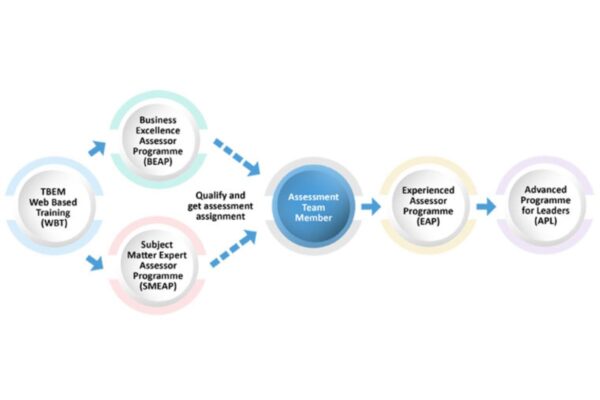
The internationally renowned Malcolm Baldrige Model has been changed and is now known as the Tata Business Excellence Model (TBEM). The Tata business group uses TBEM to keep up with the rapidly shifting business environment.
Administration, essential performance, client and market centre, analysis, study and learning of the leaders, human asset centre, processing of the panel, and business results are the seven basic functions that TBEM focuses on.
By receiving group approval, accomplishments are granted. TQMS helps Tata’s business units to make use of the model to learn a little bit about their business attributes and open possibilities for development. This is controlled through an annual process of evaluation and confirmation.
TBEM Criteria’s Objective
The Tata Business Excellence Model (TBEM) is what drives reliable assessments and provides feedback to applicants. Additionally, the TBEM criteria perform three crucial tasks that reinforce aggression:
- To aid in improving traditional execution techniques, skills, and creations.
- To promote communication and the business of best practices across organisations of diverse types.
- To serve as a working tool for understanding, managing execution, supporting hierarchical ordering, and providing learning opportunities.
- Performance excellence targets based on the TBEM.
- The purpose of TBEM Criteria is to provide companies with a coordinated method of handling hierarchical execution.
- Communication of a regularly enhanced incentive to customers and partners; enhances the maintainability of the hierarchical structure.
- Enhancement of generally reliable viability and capabilities.
- Personal and hierarchical learning.
The function of guiding principles and ideas.
Leadership
The way your company is supported and managed by your senior leaders, as nicely as how they build a clear vision, values, and performance targets, tends to catch the attention of the government. It takes into thinking how your top managers interact with your workforce, groom future leaders, evaluate the efficiency of your hierarchical system, and foster a culture that values moral behaviour and the elite.
The category includes your organization’s management structure and how it promotes moral behaviour and good citizenship.
Planning Strategically
Important planning paves the way for action scheduling, sending of plans, how good resources are ensured to carry them out, how plans are revised circumstances change, and how accomplishments are estimated and supported.
Long-distance traditional assistance is the main emphasis of the strategic planning category. Even while many organisations are becoming more adept in necessary meetings, plan enactment remains a considerable challenge.
This is especially clear given market demands are swift and ready for unexpected change, and unwanted developments that can disrupt a generally fast-paced but becoming less surprising commercial centre. This category includes the need to emphasise both the development of your plans and your ability to carry them out.
Market and Customer Focus
Client and market focus assess how your organisation tries to grasp the voice of the client and the commercial centre with a view on assisting clients’ needs, desires, and wishes, luring customers, and building steadfastness. Links are highlighted as a crucial element of a broad tuning, learning, and execution brilliance strategy in this field.
Your consumer loyalty and dissatisfaction findings provide crucial information for comprehending your clientele and the commercial environment. Such results and patterns often provide the most important information on the perspectives and business practices of your customers in the commercial centre (repeat business and positive referrals), and how these perspectives and business practices may improve the manageability of your company in the commercial centre.
Analysis, Measurement, and Knowledge Management
The main focus of the criterion for critical data is the measurement, analysis, and knowledge management category, which covers how to correctly assess, examine, improve execution, and manage authoritative information to promote advancement and hierarchical intensity.
In the easiest words, category 4 is the “mind focus” for aligning the operations of your company with its important goals. The calibre and accessibility of the information and data are necessary for such use.
Employer Focus
Workforce concentration attends to crucial workforce rehearses combined toward developing and maintaining an elite workplace and toward luring the workforce to empower it. It also investigates how the company successfully adapts to change.
Cooperatively (i.e., by your organization’s short-term purposes and activity schedules) is how this category addresses panel participation, board development, and staff commitment. These estimates also include the management of human resources as a critical element of the strategic planning category to strengthen the entire force structure.
Process Control
The case of convergence in the criteria for your prior work frameworks and work forms is Procedure Management. The category includes the key requirements for checkable proof and your capacities for effective and efficient work process management, along with operational execution, process duration, crisis availability, assessment, constant improvement, and authoritative learning.
It recognises an emphasis on linking to customers, providers, partners, and coworkers and maintaining relationships with them. All phases of the method are progressively additional important in terms of dexterity, cost reduction, and process time reduction.
Just said, “deftness” refers to your ability to quickly, skillfully, and successfully adapt to changing requirements. Depending on your institution’s technique and target markets, being ready may entail being able to provide a wide range of customised services or being able to quickly switch from one product to the next in response to changing customer demands.
Also, as time goes on, enthusiasm gradually incorporates redistribution decisions, agreements with important suppliers, and innovative strategies. Adaptability may call for special methods, such as taking out detailed structures, sharing segments, sharing assembly lines, or providing necessary preparation.
Lean processes, the board systems, usually result in cost and process time reductions. Use required measurements to ensure that every aspect of your general method is followed.
Commercial Results
The next classification of achievements comprises inspections of your institution’s offerings and operations by the intended audience and customers, the effectiveness of your institution’s general fiscal and advertising approach, task consequences, venture structure consequences, CSR activities consequences, and the consequences of every significant process and method development operation.
The Criteria’s reasons—common estimation of contributions as perceived by your customers and the commercial centre, unmatched hierarchical performance as reflected in your operational, workforce, legal, moral, and financial pointers, and authoritative and personal learning—are maintained through this centre.
By your general traditional technique, Classification 7 provides “constant” data (proportions of progress) for evaluating and enhancing procedures, products, and administrations.
Tata Group’s Marketing Plan
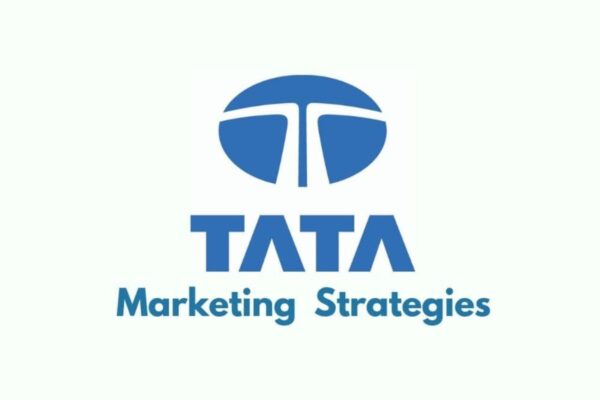
The company places a strong emphasis on the 4Ps, which represent the advertising strategy used by Tata Group.
Product
The product mix and process used in Tata Group’s marketing strategy can be described as follows. One of the major conglomerates in India is the Tata Group. The Tata Group has offices all over the world and focuses its essence on a select few businesses. The following business sectors are included in the Tata group’s portfolio:
ITeS and communication: Tata
Communications, Tata Interactive Services, Tata Teleservices, Tata Consultancy Services, and Tata Elxsi.
Retail and Consumer: Casa Decor, Titan, Landmark, Infiniti, Tata Sky, and Titan.
Tata Advanced Materials, Tata Industrial Services, Tata Technologies, and Tata Manufacturing Services are involved in the defence and aerospace industries.
Real estate and infrastructure: Voltas, Tata Power Solar, Tata Consulting Engineers, Tata Housing Development Company.
Financial Services: Tata Capital, Tata Investment Corporation, Tata AIA Life Insurance, and Tata AIG General Insurance.
Tata Chemicals, Jaguar Land Rover, Tata Steel, Tata Motors, and Tata Daewoo Commercial Vehicle Company are all involved in manufacturing.
Services are provided by Taj Air, TM International Logistics, Tata Global Beverages, Tata Services, Tata Technologies, and Tata SIA Airlines – Vistara.
This list is not exhaustive. Over seventy brands, representing twenty-eight different businesses, are present.
Price
Each Tata gathering capacity organisation runs on its own. Each of these organisations is distinct from the others and one of a kind. As a result, each of these firms uses a different estimate technique in its marketing mix because they are all involved in different initiatives that involve a variety of financial factors, such as scale and financial variables.
Place
Over eighty-five countries and more than six continents offer tata gathering. The event has grown to a huge, all-encompassing magnitude. The majority of its businesses are progressive, offer services on mobile devices, and have a respectable online presence.
Promotion
Through unique marketing strategies, the free organisations operating under the Tata brand strengthen their brand (and their own identity). Big names like Titan, Taj Hotels, and other well-known brands are frequently used in Tata’s services and consumer goods. Organizations like Tata Steel and Tata Motors also make extensive use of print media.
Businesses like guards and consultants tend to be more B2B; they don’t benefit from broad developments. Here are the other three Ps that make up the 7Ps advertising mix used by the Tata Group since this helps to showcase the brand.
People
6,60,800 people are employed by the Tata group as a whole. Tata Sons are the owner of the Tata Group itself. As the Tata group continues to be the cornerstone of value and trust, the Tata Quality Management Services division is responsible for overseeing the quality administration branch of more than a hundred independent businesses to ensure fundamental quality principles.
Physical Proof
The sheer scale of the Tata group is evidence that it is a roaring success and market pioneer. 7.2% of the BSE’s total market top is made up of the business sector top of Tata Gathering.
Procedure
The Tata group plans to grow through negotiating mergers globally and expanding its topographical boundaries. The gathering also aims to locate the sources of raw materials.
To solve the problem of the store network and to take advantage of the cost savings that come with owning the source of raw materials, the Tata group is very interested in establishing steel plants all over the world. This will allow it to supply steel to its car company at any span.
It has previously conveyed bad luck by acquiring global giants like Tetley tea, Land Rover, and Jaguar. This completes the promotional mix of Tata Group materials.
Conclusion
In a nutshell, the “Tata gang” can be considered one of the most motivating idols for aspiring businesspeople. This specific corporation is a source of pride for India and a model of success for favouring young entrepreneurs.
The Tata Group has presented the world with multiple renewed examples. The aforementioned article includes the institution’s essential attributes, including its marketing plan, business plan, list of chairmen, etc.
edited and proofread by nikita sharma






